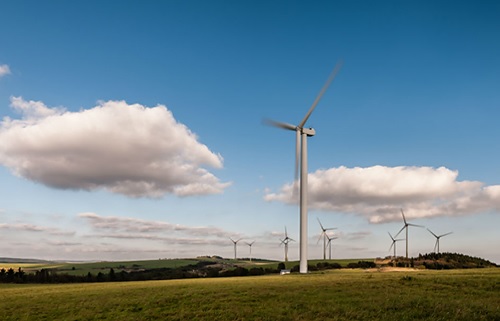News
Sharp Decline in Cost for World's Renewable Energy Updated in April 2018
According to IRENA’s (International Renewable Energy Agency) recently publicized report, the cost for power generation in Europe and other major countries has fallen drastically in the seven-year period between 2010 and 2017. The average cost for solar photovoltaic (PV) power generation has fallen 73% and the global average cost for onshore wind energy has fallen to 23%. IRENA has about 180 member-countries including the U.S., Japan, EU and others.
In the report titled “Renewable Power Generation Costs in 2017,” power generation cost in 2017 was 10 cents per 1 kilowatt hour on world average. This was a 73% drop compared to a decade ago. For land wind power, it cost 6 cents per 1 kilowatt hour. Cost fell by 23 % in 7 years. On the other hand, power generation from thermal power using fossil fuels in 2017, was around 5-17 cents, depending on case analyses. These figures tell us that costs for solar power and onshore wind power do not differ so much anymore.
Moreover, the IRENA report says that power plants with state-of-the-art technologies in solar and wind power will be able to provide 1 kilowatt hour of energy under 3 cents by the year 2019. By 2020, the cost for solar power generation would be half of what it cost in 2017. The report mentions more efficient power generation, and lowered construction/installation costs due to innovation, helped to cut overall costs.
An earlier IRENA press release of January 13 quotes Director-General Adnan Amin: “Turning to renewables for new power generation is not simply an environmentally conscious decision, it is now – overwhelmingly – a smart economic one.” “Governments around the world are recognizing this potential and forging ahead with low-carbon economic agendas underpinned by renewables-based energy systems. We expect the transition to gather further momentum, supporting jobs, growth, improved health, national resilience and climate mitigation around the world in 2018 and beyond.”
https://www.irena.org/newsroom/pressreleases/2018/Jan/Onshore-Wind-Power-Now-as-Affordable-as-Any-Other-Source
In its Energy Basic Plan (adopted by the Cabinet in April 2014), Japan, too, is expressing policies to promote introduction of renewable energy. But among target ratios of different power sources for 2030, the target for solar energy is 7%. The target figure for offshore and onshore wind power combined is only 1.7%. Compared to other industrialized developed nations, the ratio is low and costs are high. To counter this, Japan’s METI (Ministry of Economy, Trade and Industry) and its affiliated Agency for Natural Resources and Energy are encouraging competition among energy-related businesses to lower costs and are advancing policies to reduce installation and maintenance costs of power facilities.
The idea of establishing IRENA came along in 2009 to spread renewable energy worldwide. It was officially founded in April 2011. IRENA focuses on analysis, verification and policy advice on renewable energy, as well as providing developmental and technical support to member countries. According to MOFA (Ministry of Foreign Affairs), there are 150 member countries in IRENA including the U.S, Japan and EU (28 countries). From the founding stage, Japan is one of the 21 permanent member countries and is the second-highest funder next to the U.S. Japan contributes about 11% of IRENA’s funds.
https://www.irena.org/publications/2018/Jan/Renewable-power-generation-costs-in-2017









